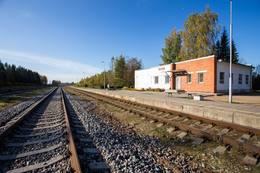Ešelonas
Ešelonas (pranc. – échelon, angl. – echelon, rus. ечелон) – priklausomai nuo konteksto terminas vartojamas žymėti:
kariuomenės išplanavimo dalis; y., judant po avangardo seka pirmasis kariuomenės ešelonas, paskui antrasis ir t.t.
traukinio sąstatas su kroviniais ir žmonėmis, gabenamas į vieną vietą (taip pat vartojamas kalbant apie traukinius karine prasme), t.y. specialios paskirties traukinių sąstatas.
Karine prasme ešelonas reiškia karinių junginių dalių išdėstymą taktine, operacine ar strategine tvarka, skirta įvairioms užduočių vykdymui skirtingomis kryptimis (sritimis) ar skirtingomis operacijų teatro sferomis.
Daugiau informacijos šaltinių
Kategorija: Taktiniai vienetai. „Arts Buck“ enciklopedinis istorijos žodynas. https://vesture.eu/Category:Taktisk%C4%81s_vien%C4%ABbas
Ešelonas (karinis reikalas). Vikipedija. https://ej.uz/qgwi
Susijusios vietos
Luggage railway station
Located 3 kilometers from the city of Valka, on the left side of the highway Valka - Inčukalns (A3).
During World War II, the railway line Riga - Valka was of special importance. It served as the main supply artery for the Leningrad Front for the German army. The luggage station was established in 1942 as a precinct for the formation of military echelons in Valka. It had 12 tracks. The tracks between Lugaži, Valka and Valga stations, which formed a triangle with each other, were also of strategic importance in order to turn the armored trains in the opposite direction. Near the Pilenai's house (behind the station) is a collapsed guardhouse, which was used by German soldiers to monitor prisoners of war - railway workers.
Nowadays, the station building can only be seen from the outside.
A monument has been erected at the Lugazi railway station since March 25, 1992 to more than 600 citizens of the Republic of Latvia deported to Siberia on March 25, 1949 and before that. This is a work by architect Aivars Kondrāts based on the design of the monument to Jānis Sīmanis. It is shaped like a stone cut in half, which symbolizes the hearts of a divided Latvian family, essentially the entire nation with its culture and virtues, reminding of one of the darkest pages in the history of the Latvian people.




